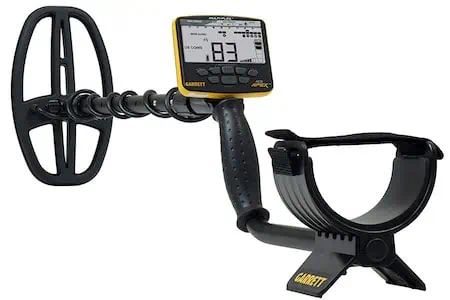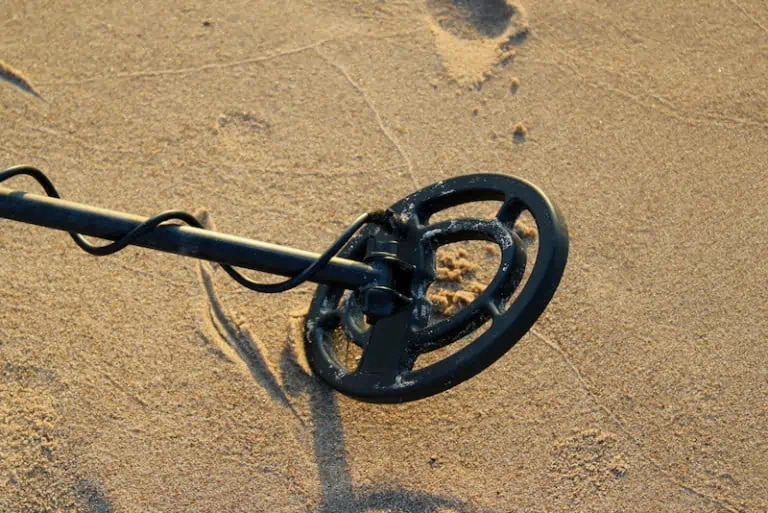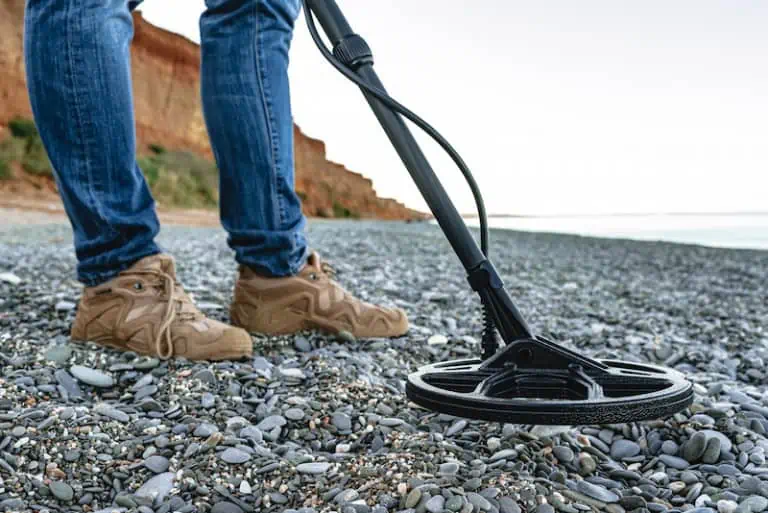Minelab X-Terra 705 review
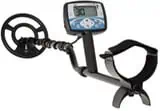
In this Minelab X-Terra 705 review, I’m going to help you determine if this metal detector is worth your hard earned money. We’ll cover all of the great features that it has to help you find buried treasure, as well as examine how well this metal detector compares to machines like the Garrett AT Pro and Minelab Gold Monster 1000.
But first, please take a look at the interactive guide below, where you can directly see how well the Minelab X-Terra 705 stacks up to some of the best metal detectors on the market.
| Photo | Model | Price | Features |
|---|---|---|---|
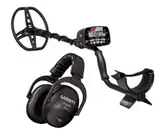 | Garrett AT Max | $$$ | Waterproof to 10 feet |
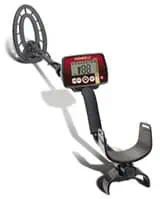 | Fisher F22 | $$ | 9″ Triangulated Concentric Coil |
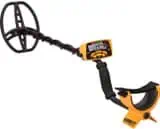 | Garrett Ace 400 | $$$ | 8.5 x 11" DD coil |
 | Minelab Vanquish 540 | $ | Search Modes: Coin, Relic, Jewelry, Custom, All Metal |
Meet the X-Terra 705
Minelab’s X-Terra 705 is made for coin shooting, relic hunting, jewelry hunting, beach hunting and gold prospecting. It uses VFLEX technology which features state of the art digital electronics built to enhance standard single frequency detection. This gives users the advantage of dependable performance and improved immunity to outside interference.
VFLEX also had the advantage of being able to change the detector’s operating frequency by changing the detector’s search coil. This means the X-Terra 705 can operate at different frequencies which allows users to easily modify the machine to suit different detecting conditions and needs.
Search coil frequencies for the X-Terra 705 are 3 kHz, 7.5 kHz, and 18.75 kHz. It comes standard with a 9” concentric, waterproof search coil that operates at 7.5 kHz. The lower end frequency coils will be best for finding highly conductive metals like silver, while the higher frequency coil will be best for lower conductive metals like gold. This detector can be used with the built-in speaker or via the ¼” headphone jack. It does not feature wireless capabilities so wired headphones must be used.
The X-Terra 705 features a large, monochromatic, transflective LCD screen with backlight. On board memory allows users to save settings, which the detector will retain even if the batteries are removed. It features 5 depth indication icons, 2 detect modes (Coin and Treasure & Prospecting), 4 factory discrimination patterns that can be personalized, All Metal and Iron Mask, and 28 segment discrimination scale. It features pinpoint mode with 2 options: automatic and sizing.
Ground balancing has 5 different options:
- Manual, 1 – 90
- Automatic
- Beach
- Tracking
- Tracking Offset
Automatic ground balancing features Ground Grab technology to allow users to ground balance the detector quickly and easily. Tracking ground balancing allows the detector to continually scan the ground for mineralization and adjust itself accordingly. Manual ground balancing allows users to adjust the ground balancing to their specifications. Beach ground balancing allows the detector to offset some of the effects from saltwater, which is highly conductive and notorious for interfering with typical VLF (very low frequency) metal detectors.
The X-Terra 705 has Target ID stability, which gives precise, solid responses in higher trash areas. This enables users to effectively search areas with a high concentration of junk targets. Noise cancelling has 5 channels and can be done manually or automatically. Sensitivity is adjustable, threshold is adjustable, and target volume is adjustable. The X-Terra 705 operates on 4 AA batteries and weighs 2.9 pounds. Minelab offers a 3-year warranty on the X-Terra 705.
Minelab X-Terra 705 for Gold
Minelab’s X-Terra 705 can be purchased with a Gold Pack. The Gold Pack configuration comes with the 5” by 10” Double-D elliptical, 18.75 kHz search coil. This larger search coil covers more ground and has a higher frequency which is great for finding gold nuggets and jewelry. This setup increases the chance of finding gold, but it should be noted that it will not find gold nuggets at extreme depths.
It will have no problem finding shallow gold nuggets, or even nuggets at moderate depths. Typically, the X-Terra 705 with the Gold Pack can find gold up to 6” deep but has been known to find larger gold up to 12” deep. It will struggle to find smaller gold buried deeply.
When hunting for gold with the X-Terra 705, All-Metal mode is the recommendation. All targets should be dug. Although this detector has good discrimination, it can be unreliable in most gold fields due to the increased soil mineralization and hot rocks. Adjusting the discrimination too high will result in users missing nuggets. So, if users are hunting in a very trashy area, and discrimination is high, be prepared to possibly miss small pieces of gold.
Minelab X-Terra 705 on Wet Sand
Minelab’s X-Terra 705 metal detector features Beach ground balancing. Ground balancing this detector in Beach mode allows the detector to override some of the issues that come with detecting in saltwater or freshwater environments. Many detectors struggle on wet sand, wet to dry sand transitions, and in saltwater.
The X-Terra 705 with Beach discrimination changes this. It does particularly well on wet sand and in standing pools of salt water. It has no trouble bypassing the effects of salt and still allows for users to obtain good depth and clear signals. When moving from dry sand areas to wet sand areas, the detector should be ground balanced again to ensure consistent readings.
Minelab X-Terra 705 Frequency
As mentioned above, the frequency of the X-Terra 705 depends upon the search coil installed. So how do you know which is best for you? There are 3 search coil options: 3 kHz, 7.5 kHz, and 18.75 kHz. The 3 kHz search coil is a 6” Double-D, the 7.5 kHz search coil is a 15” Double-D, and the 18.75 kHz is a 15” Double-D. It should be noted:
- Low frequency search coils are best suited for higher conductive targets and search deeper than high frequency search coils.
- High frequency search coils are more sensitive to lower conductive targets.
- Larger search coils detect larger targets at greater depths.
- Smaller search coils are more sensitive to smaller targets.
- Concentric search coils are more accurate.
- Double-D search coils separate targets better.
Lower kilohertz metal detectors are too sensitive on large, deep iron targets but good for high conductive metals like silver and coins. Higher kilohertz detectors are more sensitive and can lose depth but are better for lower conductive metals like gold.
Minelab X-Terra 705 VS Garrett AT Pro
The AT Pro is one of Garrett’s top metal detectors. It is fully waterproof and can be submerged up to 10 feet. It features 40 iron discrimination segments and adjustable notch discrimination. It has 6 search modes: 3 with Pro Audio, and 3 with standard audio. Pro audio, also called proportional audio, allows detectorists to hear very subtle changes in target responses. Pro audio also helps identify the target’s shape, size, and depth, which leads to quicker recovery times. Pro audio can help users dig more treasure and less trash.
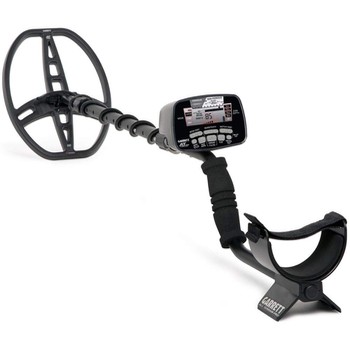
The AT Pro also has Iron Audio which allows users to hear discriminated iron. The detector will emit a low grunting tone indicating a ferrous target. This can be helpful when coin shooting or prospecting. The AT Pro features Fast Track ground balancing to help in highly mineralized soil conditions like hot rocks, black sands, and salt.
The AT Pro has an LCD screen with numerical target ID, but no backlight. This detector has 8 depth and sensitivity adjustments and features pinpoint mode. The AT Pro is a single frequency metal detector operating at 15 kHz. It comes with an 11” Double-D search coil and is lightweight, at just 3.03 pounds. The AT Pro uses 4 AA batteries and Garrett offers a 2-year warranty.
X-Terra 705 VS Gold Monster 1000
For gold prospecting, the Minelab Gold Monster 1000 is the perfect choice. This detector operates at an ultra-wide dynamic 45 kHz with 24-bit signal processor. This boosts its sensitivity to gold beyond most single frequency metal detectors and allows the detector to find a wider range of nugget sizes while canceling ground noise and false signals. The Gold Monster 1000 features 2 detection modes: Deep All-Metal and Gold. It also has a technology called Gold Chance Indicator and 6 volume adjustments.
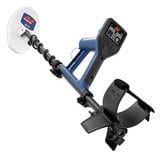
The Gold Monster 1000 features automatic, manual, and automatic + sensitivity adjustments. It has automatic noise cancelling and automatic ground balancing. The Gold Monster 1000 is not fully waterproof and should not be submerged. Care should be taken near water to ensure the detector control housing does not get wet. This detector also has improved ferrous and non-ferrous discrimination and works well in conductive and mineralized soil conditions.
The Gold Monster 1000 is lightweight at just 2.94 pounds. It can be used with rechargeable battery pack of 8 AA batteries. This detector is geared toward beginning prospectors and is easy to use. Detectorists looking for a more all-around metal detector may find this one lacking. The Gold Monster 1000 is tailored toward prospecting and the discrimination indicator only shows if a target is ferrous or non-ferrous so users can determine quickly if a target is gold. Minelab offers a 2-year warranty on the Gold Monster 1000.
Minelab X-Terra 705 VS Fisher F75
Fisher’s F75 is considered an entry level metal detector. It is simple to use and is good for all purpose treasure hunting. The F75 features Fisher’s DST, or Digital Shielding Technology. This allows users to minimize background noise while keeping maximum sensitivity. This feature can be quickly and easily turned on or off. The F75 has 4 audio tones and 3 levels of Fe-Tone (a type of Iron Audio). With Fe-Tone, users can hear and identify iron with a low grunt, regardless of signal strength. Fisher recommends this detector for prospecting, jewelry hunting, relic hunting, and coin shooting.
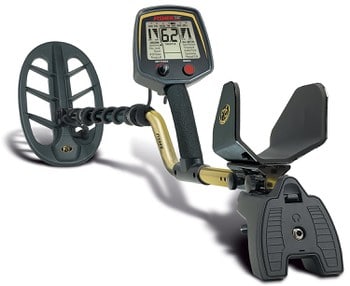
The F75 has a monochrome, backlit LCD screen and numerical target ID. It features a magnetic mineralization bar graph and readout, FASTGRAB™ ground balancing, double filter discrimination modes, and pinpoint mode. The F75 operates at 13 kHz so it will not be the best for prospecting. It comes standard with an 11” waterproof Double-D search coil. The F75 is not fully waterproof so it should not be submerged in water. The F75 can find coins up to 15” deep in good soil conditions and in difficult soil conditions, up to 10”. Fisher offers a 5-year warranty on the F75.
Minelab X-Terra 705 VS Fisher Gold Bug Pro
Fisher’s Gold Bug Pro has been in production for 10 years and is still going strong. It is the latest version of Fisher’s Gold Bug line and was built to phase out the older, analog Gold Bug models. The Gold Bug Pro operates at 19 kHz, which is a good frequency for finding gold. Fisher has included several advanced technologies in the Gold Bug Pro including Ground Grab® ground balancing, VCO (voltage-controlled oscillator), and V-Break™ tone discrimination. For prospecting, All Metal mode is the best to use as it gives a consistent threshold. Discrimination mode is the best for areas with high trash.

The Gold Bug Pro has continuous ground readouts on its large LCD screen. One features I do not like with the Gold Bug Pro is the ground readout number is the large number in the center of the LCD screen. Typically, this is where the target ID number is. On this model, the target ID is an arc shaped bar around the ground readout. This can be confusing for new prospectors who think the ground readout is the target ID. The Gold Bug Pro has ground phase readout which shows what type of ground mineralization is present. Fe3O4 graphic shows the amount of mineralization present.
The Gold Bug Pro has independent control over gain and threshold. It features dual headphone jacks and weighs 2.5 pounds. The user interface is easy to use making it simple to use for beginning prospectors. The Gold Bug Pro comes standard with a 5” waterproof Double-D search coil, but users can also purchase an 11” or 13” Double-D search coil for this detector. It operates on 1 9-volt battery and comes with a 5-year warranty.
Minelab X-Terra 705 VS Minelab E-Trac
The E-Trac operates on multiple frequency full band spectrum (FBS) that operates on frequencies from 1.5 kHz to 100 kHz. Minelab is one of the best companies in the metal detecting industry for multiple frequency detectors. They offer several models with FBS and Multi-IQ technology, both of which are Minelab’s multiple frequency technologies. This technology allows users to find deeper targets, ignore soil minerals, while having a precise discrimination and target ID. The E-Trac also features SmartFind technology that allow users to see how conductive or how ferrous a target is. This help determine trash from treasure easily.
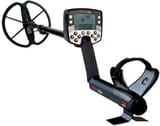
The E-Trac features 4 user modes and is simple enough to use right out of the box. There are an additional 4 user mode slots allowing users to create and save their own programs and discrimination patterns. These can be uploaded to the internet to share with other detectorists, or users can download other patterns to put on their detectors. The E-Trac has 10 discrimination patterns, a large LCD screen, target depth indicator, Quickmask toggle, noise cancellation, and pinpoint.
This detector is not fully waterproof and should not be submerged. It comes standard with an 11” Double-D waterproof search coil, but can operate with other coils, too. There are also different battery options for the E-Trac. There are 3 types of rechargeable battery packs or users can use 8 AA batteries with a special holder.
The preset modes on the E-Trac are easy to use for beginners but can be starting points for those wishing to customize the detector to their needs. This detector has been known to find silver coins between 5” and 8” deep at a variety of angles. It has been called a “silver magnet” due to its ease finding silver coins and jewelry. Minelab offers a 3-year warranty on the E-Trac.
Conclusion
All in all, this is a really great metal detector, and I hope this Minelab X-Terra 705 review has helped you discover that today (if you need any helpful tips or advice on using this machine, check out this forum). It is unique to be able to swap search coils and change the operating frequency of a metal detector. The X-Terra 705 has 3 search coil options, all Double-D coils, operating at 3 kHz, 7.5 kHz, and 18.75 kHz. For prospecting, the 18.75 kHz is great. It will not find extremely small nuggets but will find larger nuggets easily.
The lower frequencies are best for higher conductive metals like silver. The X-Terra 705 has several ground balancing options so it works well in salty conditions, highly mineralized soils, and wet sand. This detector is perfect for prospectors or general treasure hunters.
The Garrett AT Pro is one of Garrett’s top sellers and for good reason. One advantage of this machine is it is waterproof up to 10 feet. This is perfect for those detecting in shallow water or near rivers and streams. The various audio settings on the AT Pro make it perfect for finding a variety of metals. It has pinpoint, adjustable sensitivity and depth, and is lightweight. It is a single frequency detector operating at 15 kHz, so it will not be the best for finding smaller gold.
The Minelab Gold Monster 1000 is specifically tailored for gold prospecting. This detector operates at 45 kHz, which is a good balance between sensitivity, ground noise, and gold detection. Higher frequencies like this detector uses are better at finding smaller bits of gold and fine gold jewelry. The Gold Monster 1000 is not the best detector for all-purpose treasure hunting but is a fantastic machine for finding gold.
Fisher’s F75 is an easy to operate metal detector operating at 13 kHz. This is not an optimal frequency for finding gold but is a great frequency for relic hunting and coin shooting. It features DST technology to minimize background noise while retaining sensitivity. It also has a type of Iron Audio so users can differentiate between iron targets and more desirable targets. The F75 is great for jewelry, coins, and relics. The search coil is waterproof, but the F75 control box is not so the detector should not be submerged.
Fisher’s Gold Bug Pro operates at 19 kHz, which is a good frequency for finding gold. The Gold Bug Pro features a lot of advanced technologies, making it great for prospecting. One downside of this detector, for me at least, is the large numerical value in the center of the LCD screen. Typically, this is the target ID figure, but on the Gold Bug Pro, it is the ground readout showing the amount of ground mineralization. Although helpful when prospecting, it would be nice to see a target ID figure as the center of the screen.
Minelab’s E-Trac is a fantastic metal detector for all purpose treasure hunting. This detector is a multiple frequency metal detector operating from 1.5 kHz to 100 kHz. This is a wide range and ensures users will be able to find metals of all conductivity. Smartfind technology lets users see how conductive a target is prior to digging. The E-Trac has 10 preset discrimination patterns:
- Coins
- All-Metal
- Fe Coins
- Jewelry
- Foil
- Pull Tab
- Iron
- Crown Cap
- Screwcap
- Nail
There are also 10 user slots for more customization.
Each of these metal detectors has its pros and cons. For prospecting, I would highly recommend the Minelab E-Trac, Minelab Gold Monster 1000, or Fisher Gold Bug Pro.
For more all-purpose metal detecting, I would recommend the Minelab X-Terra 705, Minelab E-Trac, or Fisher F75. Each detector comes from a well-known and well-respected manufacturer and will not disappoint.
I always recommend pairing a handheld pinpointer with any metal detector. For use with the X-Terra 705, I would recommend Minelab’s Pro-Find 35. This pinpointer has adjustable sensitivity, 2 operating modes, and is water resistant. It also features DIF (Detector Interference Free) operation which significantly reduces interference with an operating metal detector. It is also high visibility to ensure it does not get lost. I also like that this pinpointer has audio and vibratory target identification and adjustable sensitivity.
As always, before metal detecting, read the manual for your equipment thoroughly. I always recommend testing the metal detector at home prior to use in the field. This can be done using household items like different coins, screws, bottle caps, and jewelry. This helps you become familiar with your machine and the ways it alerts to targets. Always be sure you know and follow all metal detecting laws for your chosen area. Laws differ by state, city, and county, so be sure you know the laws to keep yourself out of trouble.
If you enjoyed this article, please “like” our Facebook page!
You Might Also Want to Read:
